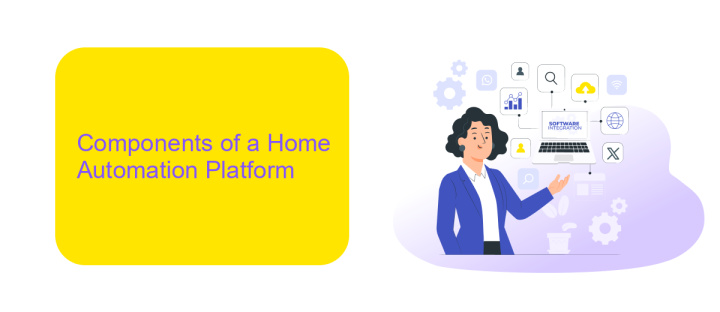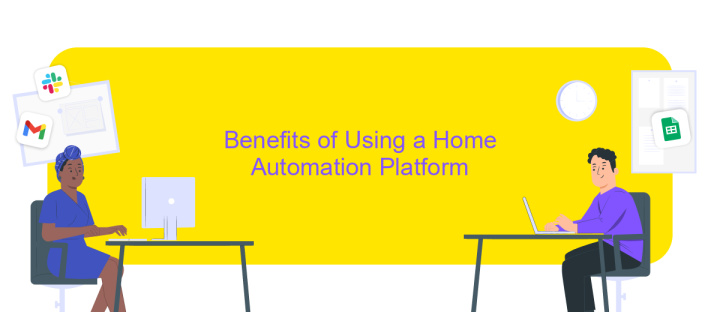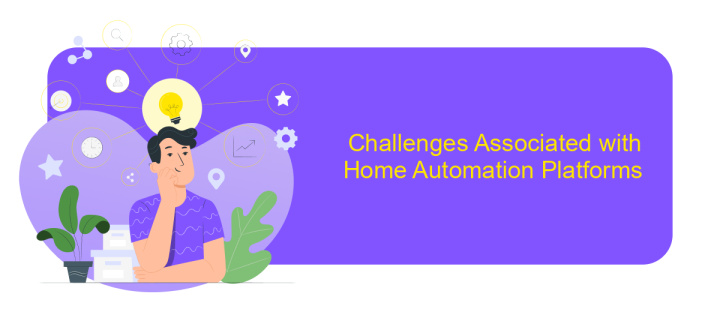Home Automation Platform
In today's fast-paced world, home automation platforms have become essential for enhancing convenience and efficiency in our daily lives. These platforms integrate various smart devices, allowing homeowners to control lighting, security, climate, and entertainment systems with ease. By streamlining household operations through a single interface, home automation not only saves time and energy but also offers increased security and comfort, making it an indispensable part of modern living.
Introduction
Home automation platforms have revolutionized the way we interact with our living spaces, offering unprecedented convenience and control. These systems integrate various household devices, allowing users to manage lighting, climate, security, and entertainment from a single interface. By leveraging the power of the Internet of Things (IoT), home automation platforms enhance energy efficiency, improve security, and provide a more personalized living experience.
- Seamless integration of smart devices
- Remote control via smartphone applications
- Enhanced security features with real-time alerts
- Energy management and cost savings
- Customizable automation routines
The adoption of home automation platforms is rapidly growing as technology becomes more accessible and user-friendly. As these systems evolve, they are expected to incorporate advanced features such as artificial intelligence and machine learning, further enhancing their capabilities. This transformation not only simplifies daily tasks but also contributes to a smarter, more efficient home environment. With continuous innovation, home automation platforms are poised to become an integral part of modern living, offering both practical benefits and a glimpse into the future of smart homes.
Components of a Home Automation Platform

A home automation platform is composed of several key components that work together to create a seamless and efficient smart home environment. The primary elements include sensors and controllers, which gather data and execute commands, enabling automation and remote control of various devices. These components often communicate through wireless protocols such as Zigbee, Z-Wave, or Wi-Fi, ensuring compatibility and connectivity across different devices and systems.
Another vital component is the integration hub or gateway, which acts as the central brain of the platform, coordinating interactions between devices. This hub often features compatibility with various third-party services, enhancing functionality and user experience. For instance, ApiX-Drive can be utilized to streamline integrations, allowing users to connect and automate tasks across multiple applications effortlessly. Additionally, user interfaces, such as mobile apps or voice assistants, provide intuitive control and monitoring capabilities, making it easier for homeowners to manage their automated systems. Together, these components form a cohesive ecosystem that enhances comfort, security, and energy efficiency in a smart home.
Benefits of Using a Home Automation Platform

Home automation platforms are revolutionizing the way we manage our living spaces, offering unparalleled convenience and efficiency. By integrating various smart devices, these platforms allow homeowners to control lighting, temperature, security, and entertainment systems from a single interface. The result is a seamless living experience that adapts to individual preferences and routines.
- Convenience: Automate daily tasks and control your home remotely via smartphone apps.
- Energy Efficiency: Optimize energy consumption by scheduling devices and monitoring usage.
- Enhanced Security: Integrate smart locks, cameras, and alarms for comprehensive home protection.
- Customization: Tailor your home environment to suit your lifestyle with personalized settings.
- Increased Property Value: Modernize your home with smart technology, making it more attractive to potential buyers.
Overall, adopting a home automation platform not only simplifies household management but also contributes to a more sustainable and secure living environment. As technology continues to evolve, these systems are becoming increasingly accessible, offering homeowners the opportunity to enhance their quality of life with minimal effort. Embracing this technology is a step towards a smarter, more efficient future.
Challenges Associated with Home Automation Platforms

Home automation platforms offer numerous conveniences, but they also come with their own set of challenges. One of the primary issues is ensuring compatibility among various devices and systems. With a multitude of manufacturers and protocols, achieving seamless integration can be a daunting task.
Security is another significant concern. As these platforms often control critical home functions, they become attractive targets for cyberattacks. Ensuring robust security measures is essential to protect user data and maintain privacy.
- Interoperability issues between devices from different manufacturers
- High initial setup and maintenance costs
- Potential for security vulnerabilities and data breaches
- Dependence on reliable internet connectivity
Moreover, users may face a steep learning curve when adopting new technologies. Not everyone is tech-savvy, and the complexity of some systems can deter widespread adoption. Addressing these challenges requires ongoing innovation and collaboration among industry stakeholders to create more user-friendly and secure solutions.


Future of Home Automation Platforms
The future of home automation platforms is poised for significant advancements, driven by the rapid integration of artificial intelligence and the Internet of Things (IoT). As smart devices become more interconnected, homeowners will experience unprecedented levels of convenience and efficiency. These platforms will not only manage household tasks but also anticipate user needs, providing personalized solutions that adapt to individual lifestyles. Enhanced security features, energy management, and seamless communication between devices will transform homes into intelligent ecosystems.
Integration capabilities will play a crucial role in the evolution of home automation, with platforms like ApiX-Drive leading the way. By simplifying the process of connecting various applications and devices, ApiX-Drive enables users to create customized automation workflows without technical expertise. This democratization of technology ensures that more people can benefit from smart home innovations. As these platforms continue to evolve, they will become more intuitive, offering broader compatibility and enhanced user experiences, ultimately paving the way for smarter, more efficient living environments.
FAQ
What is a Home Automation Platform?
How do I integrate different smart devices into a Home Automation Platform?
Can I use a Home Automation Platform without technical expertise?
What are the benefits of using a Home Automation Platform?
Is it possible to automate tasks across different applications with a Home Automation Platform?
Do you want to achieve your goals in business, career and life faster and better? Do it with ApiX-Drive – a tool that will remove a significant part of the routine from workflows and free up additional time to achieve your goals. Test the capabilities of Apix-Drive for free – see for yourself the effectiveness of the tool.

